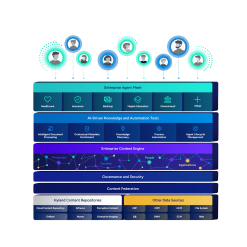Yale New Haven Health
Yale New Haven Health’s enterprise medical imaging strategy aggregates and manages distinct islands of data for better outcomes.
Yale New Haven Health, a nonprofit health system in the U.S., performs approximately 1.3 million imaging studies annually across radiology, cardiology, radiation therapy, neurosciences and various other areas.
The organization needed an enterprise medical imaging strategy to address the consolidation of its acquired hospitals, as well as all the data throughout those locations, so clinicians could easily access important medical content.
Eliminate information silos
The goal of Yale New Haven’s enterprise imaging strategy was to aggregate siloed data and make it accessible in a practical and efficient way for physicians throughout the system.
Additionally, the organization will focus on surgical areas and what it does with visible light imaging so the broader clinical community can have increased exposure.
Acuo VNA core to EMI strategy
“Acuo VNA is core architecture to our enterprise VNA strategy,” says Matt Zawalich, director of imaging systems at Yale New Haven. “What we do with Acuo, it's the central ingestion point for all of the data. It allows us to expose that data to Epic and other systems.”
Acuo VNA is core architecture to our enterprise VNA strategy.
— Matt Zawalich, Director of Imaging Systems, Yale New Haven Health
In addition, it has complex rule sets that allow Yale New Haven to get data out to other third-party systems when necessary — think advanced processing and AI systems.
Enhance care
Zawalich says an obvious advantage gained so far is simpler collaboration. “A provider at a hospital in Rhode Island, for example, needing to see a prior study from New Haven, is now a nonissue,” he says. “It's basically a nonfactor as part of their workflow, whereas before we would have had to coordinate the transfer of images between locations.”
Today, Yale New Haven can depend on the VNA to aggregate all that clinical data into a single platform and share it in an easy way for clinicians to view.









